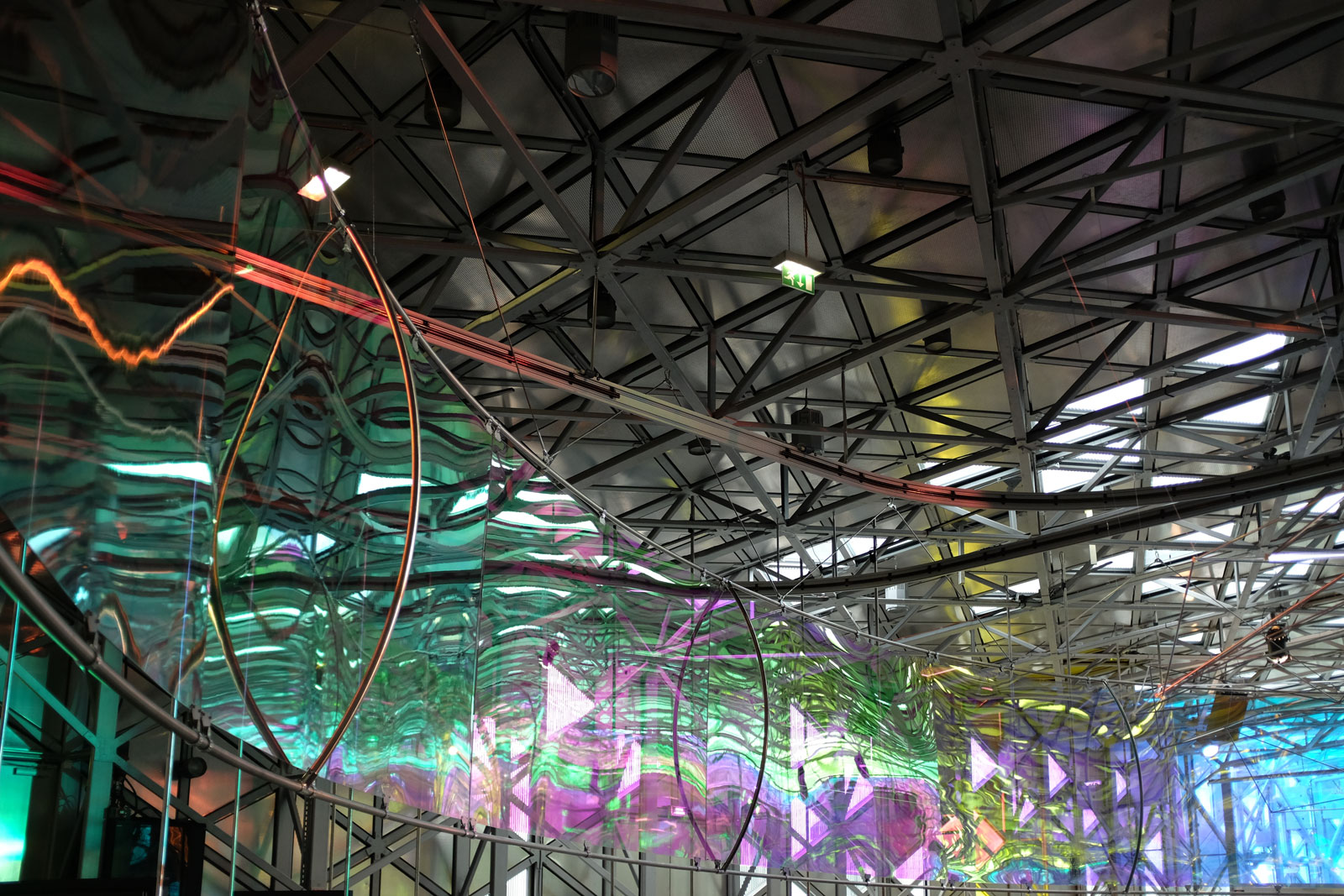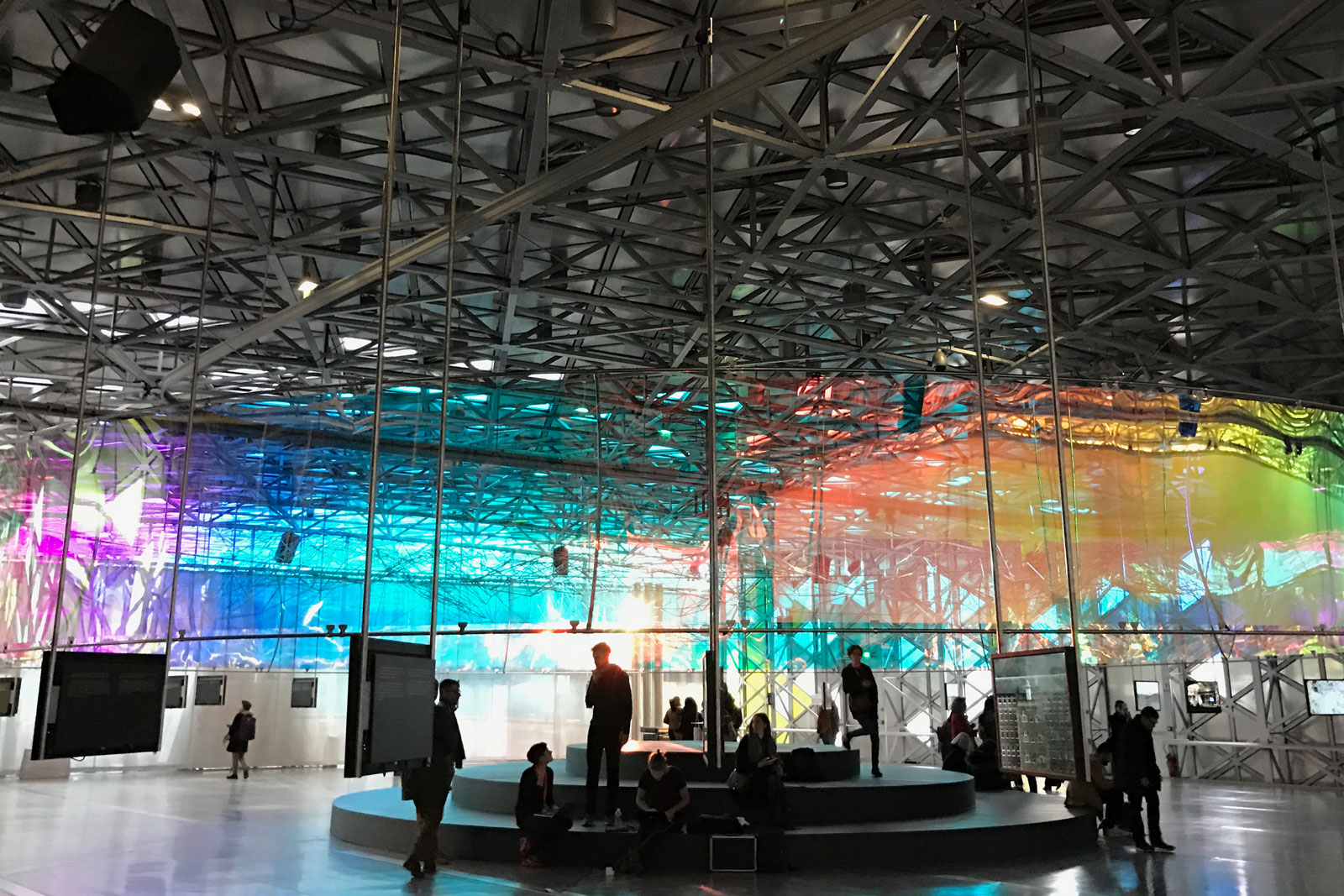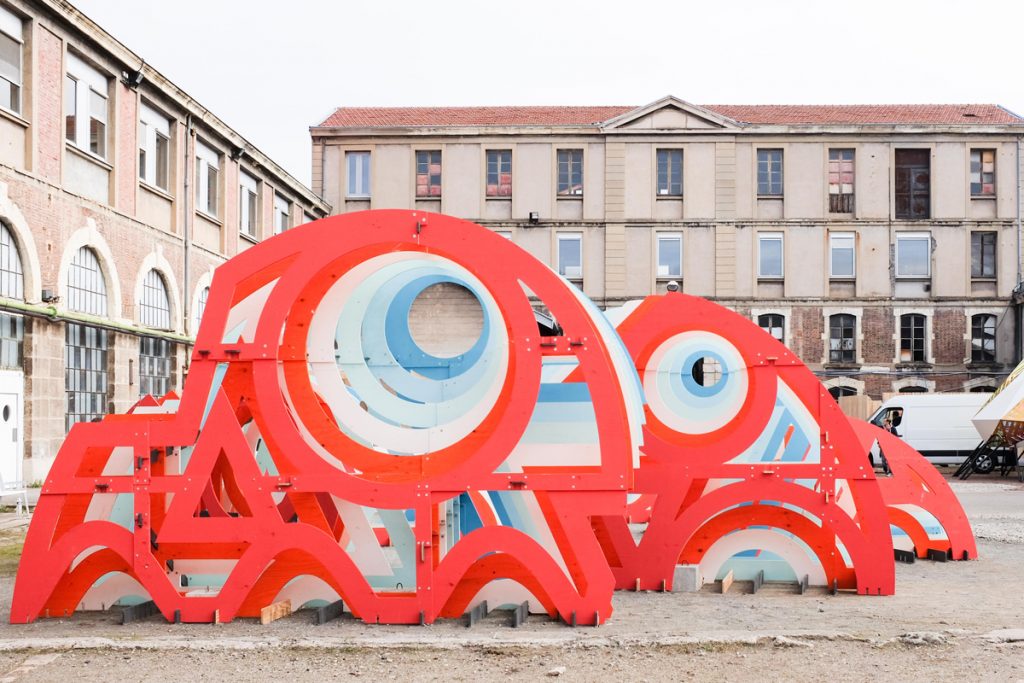Interview: Curator Joseph Grima of Space Caviar
Reflecting on the artist’s cerebral work at the 10th Biennale Internationale Design Saint-Etienne

“Player Piano: A Subjective Atlas of a Landscape of Labour” was one of the most cerebral, engaging exhibitions we saw at this year’s 10th Biennale Internationale Design Saint-Etienne. It was the final exhibition in the exploration of the Cité du Design, the event’s primary location. Here, the 1000-square-meter room appeared to be almost empty. A round, metallic stage sat in the middle of the former-industrial space and was surrounded by dozens of monitors that showed scenes of laborers working all over the world. Live piano music was in the air but there was no pianist. In fact, the score was composed and played in real time by a robot. This presence, as well as the title, is inspired by “Player Piano,” a 1952 dystopian novel written by Kurt Vonnegut, where automation takes over humans. Visitors to this exhibition felt a clear sense of invasion of technology and a desire to be free from it.

Joseph Grima from Space Caviar curated the exhibition. We met him to discuss this piece and the mutations of physical work, which was the theme of the entire design biennial.
Don’t you feel that every visitor to the space immediately asks, “Where are we?”
Well, we are sitting at the moment underneath the island of Abraxa. This project was commissioned by Olivier Peyricot, the director of Saint-Etienne Biennale, as a conclusion to this reflection that he organized through the Biennale on the nature of work. Work is something that defines culture and it has a very strong link with design, but it is also in rapid transformation. This is a very hot topic right now, [and there’s] a lot of both pessimism and optimism, fear and also excitement.

Did he give you specific guidance for the commission?
Being the last exhibition on the circuit, Olivier asked us to react and to look toward the future. The idea that we wanted to suggest with this exhibition is the dream of liberation from work and from the dread of technology. These are ideas that we’ve been thinking about for a very long time, that we’ve been struggling with for three million years. We were very interested in reframing these questions as timeless questions, and liberating them a little bit from this very constrained perspective of the present. We’ve been embarking on a journey and attempting to remove ourselves from this oppressive presence, and to look at these questions in historical terms.
Can you explain how you gave shape to such an abstract concept?
We decided to set up a kind of fictional narrative. We decided to propose to the visitors a journey to the island of Abraxa. Abraxa is an interesting place because it was mentioned first by Thomas More as the original territory in which Utopia was constructed. So we set up this island in a place that is not specified and also a time that is not specified. We began to populate it with a series of stories, micro narratives and scenarios, which you can seen walking around the space.”

The stories of work and labor are all over the place but not as an oppressive presence. How did you achieve this?
We went to 20 countries to get all of this footage. Some of them we had to travel for a week to get. At the same time, we didn’t want to do it on how many places we went to. So at the entrance we simply list the locations, because the point is not where they were or how much work we did, but more like a simple concept of correlation. They’re all real, but we were not interested in the reality. We were interested in presenting fictional characters or fictional scenarios, so we removed all specificity of time and place, and simply presented them as a whole. Our intention was that it would be a little bit like editing a film through the movement of your body, that you would be taken through a series of transitions of connections and relations. And through all of this, it suggests the possibility of a completely different reading of history.
Where does this come from?
This is essentially what Abraxa tends to suggest, the possibility of a less pessimistic reading of the future than “Player Piano” by Vonnegut. This installation is in a way an homage to a great writer, but also an attempt to reframe his narrative, his fiction, presenting it instead as a not-inevitable future. It’s a very dark novel, very pessimistic. Speaking of technology and speaking of automation, it’s very easy to be drawn into a kind of deterministic dystopian narrative.”

So you avoid oppression and darkness?
We wanted it to be a little bit lighthearted, and the visit concludes with a kind of touristic apex, which is the binoculars in which you look through and you can see the inhabitants of Abraxa beginning to collaborate to create a civilization. Over the period of one month, civilization becomes increasingly complex. And it will begin to make interventions, it’ll begin to transform the landscape.”

What about the future of work? What do you personally think about the digital transformations of our working life?
I agree that it is necessary to retake the control and to not simply become passive subjects of a sort of new liberal market driven universal reality in which there’s no alternative. And instead, begin to dictate those terms of the future that we create and to retake control of the political terms in which technology is deployed. And I think that this is also an invitation to designers, architects and practitioners to again immerse themselves to take control, to become engaged again, not simply in thinking around or researching, but creating and inventing the future.”
Screen image courtesy of Biennale Internationale Design Saint-Etienne, all other images by Paolo Ferrarini












